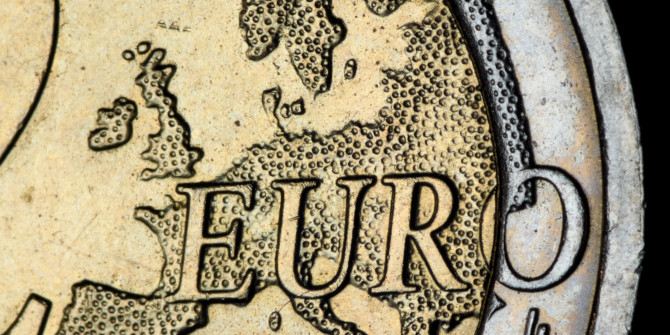EU leaders discussed changes to EU migration policy at a summit in Granada on 6 October. Sergio Scandizzo argues that rather than viewing migration as a temporary crisis, the EU must wake up to the reality that climate change and socio-economic trends will make large-scale migrations of people inevitable in the coming decades.
For two years, every day, as I walked my daughter from the parking lot to the kindergarten of the European School in the Kirchberg district of Luxembourg City, I strolled past the street sign of the Rue Richard Coudenhove-Kalergi and often found myself wondering idly who he was.
To my shame, it was only by the time my daughter was well into her high school years that I found out that Richard Nikolaus Eijiro, Count of Coudenhove-Kalergi, had co-founded the first movement for a united Europe (the Pan European Union) in 1922, proposed Schiller’s Hymn to Joy as united Europe’s anthem, proposed a Europe Day in May, received the Charlemagne Award from the city of Aachen and supposedly served as a model for the character of Viktor Laszlo, the resistance hero and Humphry Bogart’s romantic rival played by Paul Henreid in Casablanca.
Coudenhove-Kalergi also wrote several books, one of which deserves to be mentioned here, not so much because of the largely aristocratic vision it extols, but rather because of a tiny paragraph about the future of the European population. The book is titled “Praktischer Idealismus” and the paragraph in question has inspired one of the longest enduring right-wing conspiracy theories: the so-called “Kalergi Plan”.
I will leave it to the reader to decide whether the conspiracy ravings have any merit. I have just mentioned this brief text as a paradoxical counterpoint to Hans Kundnani’s recent book “Eurowhiteness”, where the author argues that pro-Europeanism is “analogous to nationalism – something like nationalism but on a larger, continental scale,” and that the EU itself has “become a vehicle for imperial amnesia” defining itself in terms of culture and religion, in other words, “whiteness”, especially following the refugee crisis of 2015. It is difficult not to sympathise with this perspective when the Italian Prime Minister and the President of the European Commission talk about the “borders of Europe” after their visit to Lampedusa.
The inevitability of immigration
Over the first three quarters of 2023, around 85,000 migrants have reached the coast of Italy with their own precarious means, while almost 40,000 were rescued at sea and more than 5,000 have arrived on boats operated by various non-governmental organisations. While these numbers of people, who are either fleeing poverty or physical danger, should hardly make a country of fifty million people, let alone a continent of four hundred and fifty million, lament a siege or an invasion, it is a fact that at the same time across Europe, immigration is more and more perceived, and played up, as a crisis of our identity and a threat to our way of life.
The level of the current political debate on immigration is unfortunately abysmal and no political party, national or supra-national authority, NGO or opinion maker seems able to look beyond the “immigration crisis” frame according to which we are witnessing a temporary surge in unlawful entries driven as much by conflict and poverty as by human traffickers. In other words, a combination of unfortunate political-economic circumstances and criminal actions to be addressed through larger foreign aid and stricter coast guard patrols. The numerous articulations of such a narrative in which all sides of the political spectrum try to fit their own interests are too empty-headed to be recalled here.
It is usual at this point to observe that paradoxically almost every EU country has been experiencing labour shortages, population aging and birth rate decline, all of which, barring a revolution in that same way of life we are so eager to protect, can only be balanced through an increase in immigration. However, Kalergi’s vision of a cosmopolitan and hybrid Europe will eventually come to pass not because of any conspiracy, but simply because of an irresistible combination of culture, geography and climate, as poignantly explained in Gaia Vince’s book “Nomad Century”.
Combating the threat of climate change and specifically the increase in temperatures with all its deadly consequences of extreme weather, droughts, floods and desertification, is now the official priority of both national governments and supranational entities. The threat of climate change is fundamentally affecting economic policies as well as financial strategies. However, regardless of whether we believe (and many already do not) that it will eventually be possible through appropriate transition policies to avert a “hot house” planet, it is a fact that growing parts of today’s world are already too hot, too arid or too low-lying against an impossible-to-contain body of water, and that people are already leaving those regions in search of a better future.
This means that a large number of people are already leaving those regions, but that an even larger, much larger one, will migrate in the future. This gigantic movement of people will happen almost entirely towards the north of the planet, as tropical and equatorial regions become less and less liveable while heretofore inhospitably cold places across the northernmost parts of America, Europe and Asia begin to warm up. African people, who currently represent around one and a half billion of the world population (and are projected to grow to two and a half by mid-century) will be worst hit by climate change and will have little alternative but to seek refuge in their northern, richer, older and less populated neighbouring states.
Three facts
There are therefore three facts that urgently need to enter today’s biased narrative on immigration. The first is that we are talking about an epochal phenomenon that has already started. Discussing how to stop it is like debating how to invert the flow of time or the law of gravity.
The second, is that immigration is as much a problem itself, cultural, economic, financial, logistical as it is a solution to a number of much more threatening and long-term challenges like economic growth, population aging, declining birth rates and the development of large and sparsely inhabited northern regions of the planet.
The third is that no solution, either in the short or in the long term, will ever be found insofar as we continue to treat the problem of immigration as a “crisis” or “emergency”. There is no emergency or, if there is, it is localised and logistical in nature. What we are witnessing is the beginning of a radical redistribution of the human population on a rapidly warming planet that will last for decades, possibly centuries to come. We can either decide to look at it strategically and govern its evolution or ignore it and be swept away.
There are some signs that reality is starting to sink in. This summer, the Italian government discretely approved a new programme for immigration flows foreseeing more than four hundred and fifty thousand legal entries into Italy over the next three years, more than any other previous administration of the last ten years. If the most right-wing government in Italian republican history has started to facilitate immigration, perhaps there is some hope.
Note: This article gives the views of the author, not the position of the European Investment Bank, EUROPP – European Politics and Policy or the London School of Economics. Featured image credit: BalkansCat/Shutterstock.com






Thanks! I appreciate your message!
Interesting view. Indeed, EU needs expats – i.e., highly skilled immigrants to keep the economy competitive so that we can answer to the challenges of China [ and, who knows, the US]
The following pitfalls were, however, not discussed.
1. How will it influence the social stability in the EU? Will not it play in the hands of the (semi) nazi parties ( AfD, PVV, Danske Folkeparti, the Strache-party in Austria, etc)?
Will not it put Putin’s russki’s in the state to destabilize the EU?
Will not it play in the cards of Orban if we do so?
2. I would like to be quite frank. The solution should be global – involving Russia and China, as well. Simply said: it is to be avoided, that the rare earth metals go in the direction of China [from Africa] while the climate migrants go in the direction of EU. And all these while the local societies there air quite hostile views towards the West.
3. How much will it cost the EU – and what will be the profits? It is alas a fact, that quite significant chunk of the climate migrants cannot participate to the (post) industrial/highly technical Western societies. How can we attain, that they can contribute as quickly as possible.
Finally, I see a problem of culture. It is not an exception, that the societies afflicted by the climate change do not share the common Western values. ( Such as: the strong cannot suppress the weak, women and men are equal, LMBT is not a sin/deformation, the rules and law hold for everyone regardless financial position, you have to exploit the opportunities in the Western societies to be successful, the primate of knowledge/learning/innovation, being ready to compromises is not a sign of weakness – on the contrary etc.). Do we have to worry, that the values nurtured by the climate migrants (sometimes quite aggressive machismo ) will jeopardize those of us? How to “set” them over to our values? Etc.